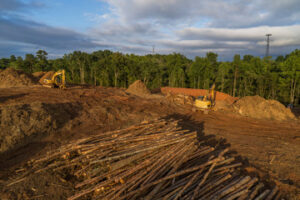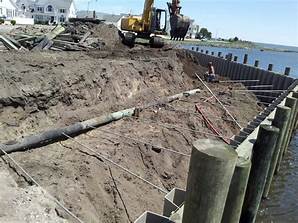SEO Services Modesto are an important investment for businesses that want to improve their online visibility. A well-defined SEO strategy should be based on business goals and objectives, such as increasing website traffic or generating leads.

As a marketing discipline and practice, SEO evolves as our technology and society progress. It requires an understanding of search engine algorithms and user behavior.
Keyword research is a key part of SEO services, helping to identify keywords that searchers are using to find businesses like yours. This helps you create content that is relevant to those searchers and can improve your chances of ranking well in SERPs. It can also help you identify new opportunities to optimize your website and content.
Performing proper keyword research requires a comprehensive understanding of your audience’s search intent and context. It is important to understand what terms they use and why, so that you can effectively align your products or services with their needs. This will ensure that your web pages are relevant to the search terms, and can increase your chances of converting potential customers.
It is also important to consider competition when determining which keywords to target. High-search volume keywords are often highly competitive and dominated by large companies that have huge budgets for marketing and SEO. Instead, focus on long-tail keywords that have lower search volumes but still deliver traffic and have a higher conversion rate.
In addition, it is essential to regularly update your keyword list to stay current with search trends. It is common for websites to optimize for terms that are no longer being used by their audiences, leading to a mismatch between their keywords and search engine results. Keyword research can also help you identify new opportunities to optimize and create content for your website.
Once you’ve determined which keywords to target, you can start optimizing your site for them. Keywords should be included in your title, description, and content to increase your visibility. You should also incorporate them into your meta tags to improve your organic search rankings.
Content creation
Content creation is one of the most critical aspects of SEO services. It’s the fuel that drives your digital marketing car, and it needs to be consistent in order to drive results. Consistently creating valuable, informative content can help you win key words, search queries and traffic online. It can also increase your brand’s trust and authority with potential customers and leads.
The process of developing and producing content begins with a comprehensive plan and strategy that includes goals, timescales and measurable success criteria. This is a critical step in the planning phase, and will help you determine what type of content to create, how long it will take to produce and how much you will spend. The goal of a content marketing campaign is to generate qualified leads that are ready to convert into paying customers. This can be done through a variety of channels, including social media, blogs and emails. Content is the most effective way to attract and engage these prospects, and it can be used at every stage of the customer journey to drive them through the sales funnel.
When developing a content strategy, it is important to have a clear understanding of your audience and their pain points. This will help you create content that addresses their needs and solves their problems. This will make your content more likely to rank highly in search engines. In addition, it will improve user experience by helping visitors find the information they need quickly and easily.
Another aspect of content development is keyword research. This is essential for ranking high in search engine results pages (SERPs), and it is a great way to optimize your website for visibility. It is also important to monitor your performance and make adjustments based on the data you collect.
On-page optimization
On-page optimization is a core component of SEO services, and it refers to the process of optimizing individual webpages on a website. The goal is to make web pages relevant and valuable for both search engines and users. This can be done through a number of methods, including keyword research, content optimization, and technical optimization.
Historically, on-page optimization focused primarily on keywords. Whether or not a page ranked for a particular term depended on how well keywords were incorporated into the page. This made sense, because incorporating keywords into the page indicated to search engines what the page was about.
However, on-page optimization now focuses more on user experience and how a website functions. This includes things like ensuring that the page contains relevant information, that the content is organized in an easy to navigate way, and that the page loads quickly. It also involves using a responsive design that allows users to view the website on various devices, including smartphones and tablets.
Meta tags and internal linking are also important elements of on-page optimization. Meta tags help search engines index a webpage, and they are also one of the most important factors in determining rankings. A good meta tag should include the primary keyword and be optimized for click-through rates. Meta descriptions are not as important as the title tag, but they can still have a significant impact on CTR.
Another important aspect of on-page optimization is the URL structure. This should be kept as short and simple as possible to improve the user experience. It is also important to use hyphens to separate words, as these are easier for search engine bots to read.
Link building
Link building is a crucial part of any search engine optimization (SEO) strategy. Without it, websites aren’t going to get much traffic. There are several ways to secure links online, including providing valuable content in exchange for a link from another website, and submitting your site to various directories. However, it is important to remember that securing quality backlinks requires a lot of work and patience. You shouldn’t try to shortcut the process by buying links or using unethical tactics, which are against Google’s guidelines and can damage your SEO.
The first step in securing quality links is to find a page that’s worth linking to. This is typically a resource page, such as a blog post, tool, research study, or graphic. These pages should serve value to your audience and niche, and should be easily resonant with your brand’s identity. In addition, they should be accessible from the homepage of your website.
Next, you need to analyze your niche and competition. This includes performing keyword research and identifying your competitors’ linkable assets. A competitor analysis will also help you identify opportunities in your industry and understand how other companies are achieving their goals.
Lastly, you need to decide on a strategy for getting links. This will depend on your goals and industry. Generally, the most effective strategy is to focus on strategies that involve adding value to other websites and web users. This is a slow approach, but it can yield truly great links and excellent visibility. The best way to do this is by focusing on content marketing, social media, and PR. This approach can increase your credibility and improve your web positioning, and it is a safe way to avoid being penalized by Google.
Analytics
SEO thrives on data, and analytics provides a gateway to this rich information. It can help businesses understand their strengths and weaknesses, highlighting opportunities for improvement and identifying areas that require more attention. In addition, it can help identify specific keyword phrases that drive traffic and conversions. This insight can guide content optimizations that increase search engine visibility and enhance user experience.
In addition to tracking traffic, SEO analytics can help identify technical issues that might be impeding a website’s search engine performance. This can include things like broken links, slow loading times, or insufficient crawl space. Addressing these issues can have a significant impact on the effectiveness of an SEO campaign.
The goal of SEO is to attract users and drive them to a desired action, whether that’s signing up for a newsletter or making a purchase. Analytics can help track the success of these efforts, evaluating metrics like bounce rate and time spent on a page. It can also highlight potential obstacles to conversion, such as confusing navigation or unsatisfactory content.
Predictive analytics in SEO refers to the use of historical data, statistical algorithms, and machine learning techniques to predict future trends in search engine behavior and user engagement. This type of analytics focuses on high-impact optimization opportunities and can help businesses anticipate algorithm changes and stay ahead of the curve.
This can be achieved through a systematic approach to experimentation, iterative testing, and data-driven decision-making. It requires a strong understanding of SEO, but it can be an effective tool for improving online performance. However, a successful predictive analytics strategy requires a high level of skill and a substantial budget. A good rule of thumb is to start with a minimum monthly budget of $3k.








